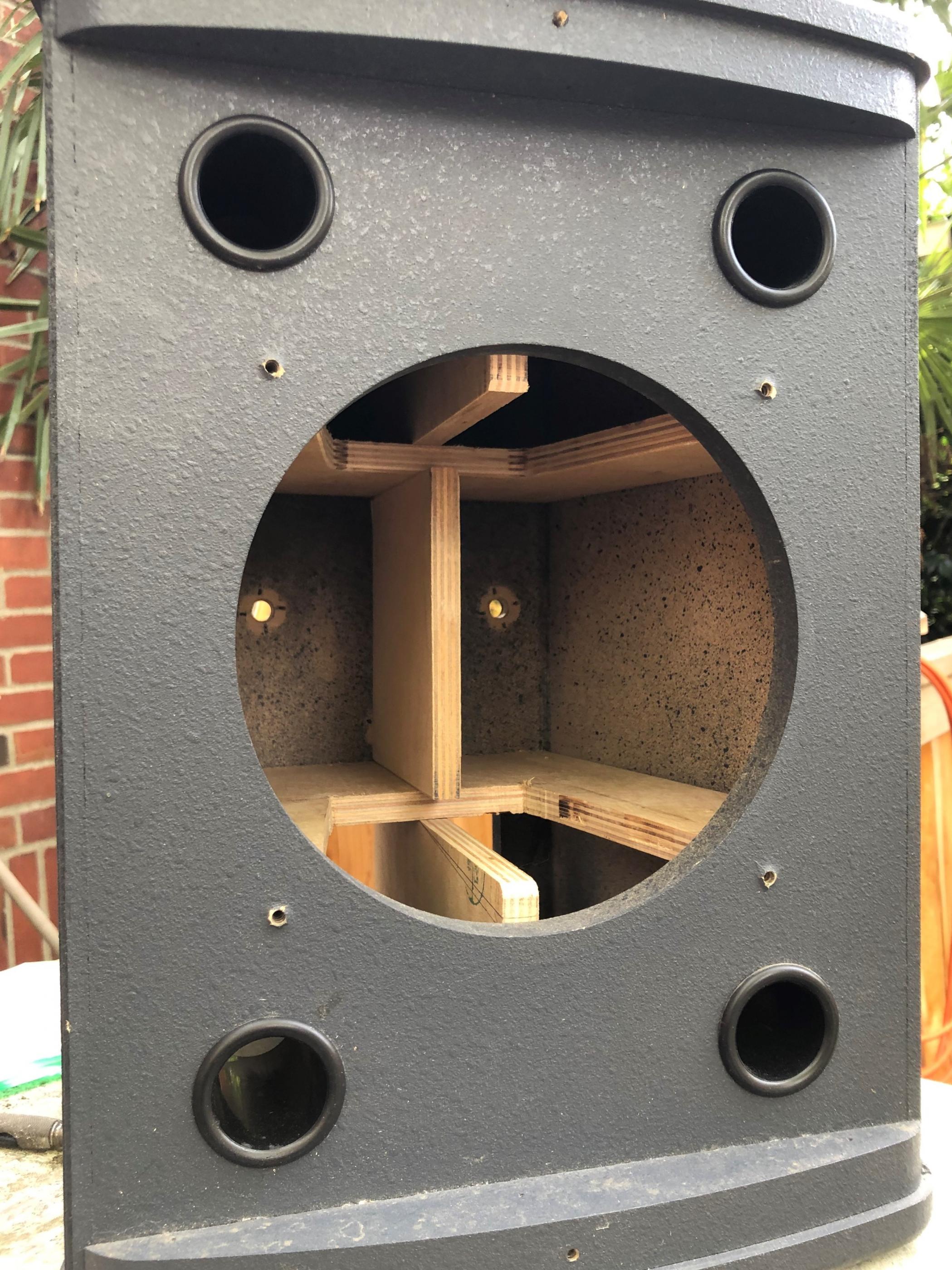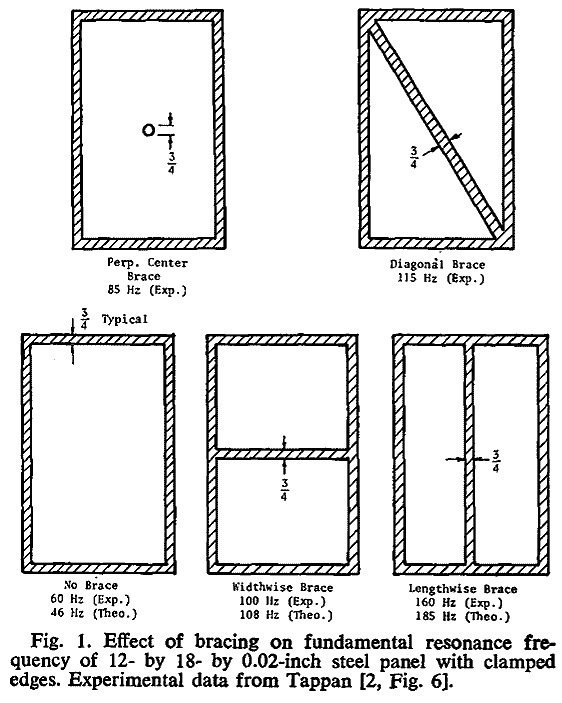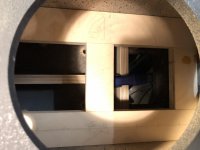normally, with coaxial drivers where the tweeter is mounted behind the woofer, screwed on to the woofer magnet back plate, one need a steeper acoustic slope for the crossover to the woofer and a shallower crossover slope to the tweeter to compensate for the physical offset, there is a formula one can use to get accurate order of the slope
That is normal for drivers mounted on a flat baffle, but not for drivers where the tweeter is way behind the woofer, like a tannoy coaxial. there is no way one can get a good phase match this way
Tannoy did this the other way around with 2nd order on woofer and 4th on tweeter
From when did Tannoy do it that way around?
Because up to and including the DMT series they stated their crossovers as being "second order overdamped low frequency; first order high frequency."
Not sure what they did after that.
Tannoy did this the other way around with 2nd order on woofer and 4th on tweeter
Whats the polarity of woof and tweet, in phase or out of phase?
That they did not explain. Not sure if I can attach the manual here but it can be downloaded from http://warehousesound.com/r/tannoyI8manual.pdf
I also note they do an i10,12 and 15. I'd be tempted if I had ANY time for projects (which I don't).
I also note they do an i10,12 and 15. I'd be tempted if I had ANY time for projects (which I don't).
That is normal for drivers mounted on a flat baffle, but not for drivers where the tweeter is way behind the woofer, like a tannoy coaxial. there is no way one can get a good phase match this way
There is an AES article that shows how one can deal with the driver centre-to-cente in a coax. A doigital XO with real time delay would be a solution that could work.
dave
Whats the polarity of woof and tweet, in phase or out of phase?
Tweeter is out of phase. I posted the schematic here. Tannoy i8 makes me coax convert
Bracing.
I'm wondering if the higher woofer output relative to the tweeter is the box flapping. Where the sides meet the front baffle, Tannoy routed a 25mm x 5mm rabbet for the grill to rest in so that part of the side panels is only 10mm thick.
I have lots of 1/2 and 3/4" birch ply off-cuts I could make some bracing with but wondering if a matrix of 1/2" oak dowel rods would be a lot quicker since they only need to be trimmed for length vs a complexly shaped shelf brace that has to be sized to fit through the woofer hole.
Looking for maximum effort😛erformance ratio so I can start playing with the crossover. Then if I still like them maybe plan a better cabinet as a spring project.
Is there a volume reduction target I should be aiming to stay under to avoid messing up the box tuning?
I've dry fit some bracing but thought it might be better to start a separate thread to post my remaining questions.
https://www.diyaudio.com/forums/construction-tips/378353-cabinet-bracing-retrofit.html#post6819796

https://www.diyaudio.com/forums/construction-tips/378353-cabinet-bracing-retrofit.html#post6819796
There is an AES article that shows how one can deal with the driver centre-to-cente in a coax. A doigital XO with real time delay would be a solution that could work.
dave
absolutely, with digital crossovers anything seems possible, but i do not like them anyway 😀
Is there a volume reduction target I should be aiming to stay under to avoid messing up the box tuning?
If you’re concerned about that, and less about aesthetics while experimenting, then bracing is often just as effective on the outside of the cabinet. Also, running the bracing parallel to the longest panel edge in the centre position between the edges has been shown to make the biggest impact in panel resonance reduction. Much more so than multiple cross-wise or even diagonal bracing.
running the bracing parallel to the longest panel edge in the centre positio
It should not be dead centre, just off is better.
I like to phrase it like this: The aspect ratio of the subpanels created by the brace should be higher than the aspect ratio of the original panel.

You want to push (potential) resonances as high in freuency as possible.
dave
I like to phrase it like this: The aspect ratio of the subpanels created by the brace should be higher than the aspect ratio of the original panel.
Thanks that helps a lot.
I fashioned 2"x3/4" braces on the sides tied together at top/bottom/middle. I then made a brace for the back wall (1.5"x3/4") that tees into a cross piece that runs wall to wall and reinforces the top of the XO cutout. I'll add a short piece that connects the back wall to the central cross brace.
The baffle is all that remains. I was thinking ribs or dowels to the screw holes or would it be better to brace the magnet?
Are the braces unnecessarily big? What's shown in the pic I believe leads to a 5% volume reduction.
Attachments
- Home
- Loudspeakers
- Multi-Way
- Tannoy i8 makes me coax convert
